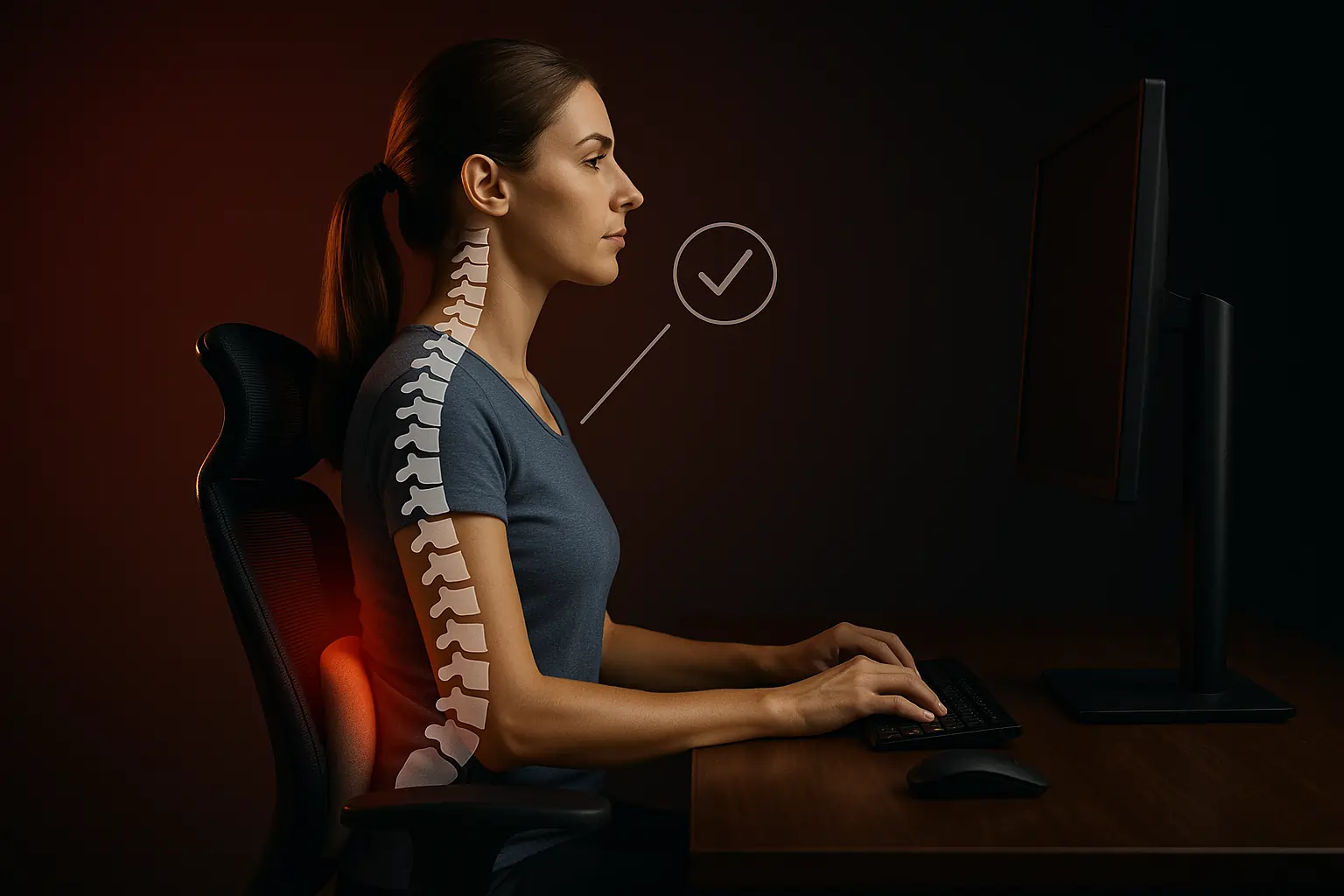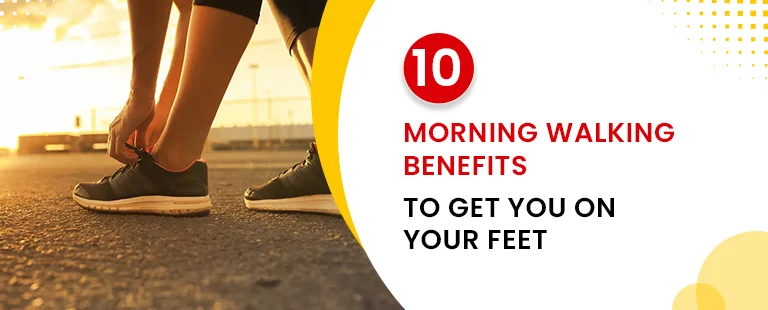In our busy lives, a simple thing like how we sit or stand can have a huge impact on our health. Back pain has become a common problem for millions, from office workers to homemakers. The good news is that a lot of this discomfort is preventable. This guide from the spine specialists at Germanten Hospitals will give you clear, actionable tips to maintain good posture and keep back pain away for good.
Let's build a foundation of strength and health, one small habit at a time.
Why Should You Care About Your Posture? It's More Than Just Sitting Straight
Many of us think of posture as just "sitting up straight." But it's much more than that. Good posture is the correct alignment of your body where the muscles, bones, and joints are balanced, putting the least amount of strain on your spine.
Think of your spine as a strong, flexible stack of building blocks. When these blocks are stacked neatly, the structure is stable. But if the stack is crooked, some blocks bear more pressure than others, leading to wear and tear over time. This is exactly what happens with poor posture.
A 2024 review of studies in the Journal of Orthopaedic & Sports Physical Therapy confirmed that prolonged poor sitting posture is directly linked to chronic lower back pain. The strain isn't just on your back; it can lead to:
- Neck and Back Pain: As your head tilts forward, the weight on your neck muscles increases dramatically.
- Headaches: Tension in the neck and shoulders can trigger tension headaches.
- Reduced Lung Capacity: A slouched position compresses your chest, making it harder to take deep breaths.
- Low Energy: Your body has to work harder just to hold you up, leading to faster fatigue.
The goal isn't to be stiff and rigid. It's about finding a balanced, neutral position that feels natural and strong.
The 10 Essential Tips for a Healthier Back
Here are ten simple yet powerful strategies you can start using today to protect your spine.
1. Master the Art of Sitting: Your Desk Job Survival Guide
For many of us, sitting is a big part of the day. Doing it correctly is our first line of defense.
- Feet Flat on the Floor: Your feet should rest flat, with your knees at the same height as your hips or slightly lower.
- Back Supported: Use your chair's backrest. Your lower back should be supported. If there's a gap, use a small cushion or a lumbar roll.
- Screen at Eye Level: The top of your computer monitor should be at or slightly below your eye level. This prevents you from bending your neck up or down.
- Arms and Elbows: Your shoulders should be relaxed, and your elbows should stay close to your body, bent at a 90-degree angle.
Pro Tip: Avoid crossing your legs for long periods. It can misalign your pelvis and put extra stress on your lower back.
2. Set Up an Ergonomic Workspace: Your Throne for Spine Health
Your workspace setup can make or break your posture. "Ergonomics" simply means designing your workspace to fit you, minimizing strain and maximizing comfort.
- Chair: Invest in a good chair with adjustable height and back support.
- Monitor: If you use a laptop, get a separate keyboard and mouse and raise the laptop so the screen is at eye level. A stack of books can work in a pinch!
- Keyboard and Mouse: They should be placed close enough that you don't have to reach for them, keeping your wrists in a neutral, straight position.
3. Move It or Lose It: The Power of Breaks
Even the perfect sitting posture becomes bad if you hold it for too long. Our bodies are made to move.
A study from the Indian Journal of Occupational and Environmental Medicine (2024) highlighted that workers who took short, frequent breaks reported significantly less back and neck pain. Follow the 20-8-2 Rule:
- For every 30 minutes, change your position.
- Sit for 20 minutes.
- Stand for 8 minutes.
- Move around and stretch for 2 minutes.
Set a timer on your phone if you have to. This simple habit is a game-changer.
4. Strengthen Your Core: Your Body's Natural Back Brace
Your core muscles are like a natural corset that supports your spine. A weak core forces your back muscles to do all the work, leading to strain and pain.
You don't need a gym membership to build a stronger core. Here are a few simple exercises:
- The Bridge: Lie on your back with knees bent. Lift your hips off the floor until your body forms a straight line from shoulders to knees. Hold for a few seconds and lower.
- The Bird-Dog: Start on your hands and knees. Slowly extend your right arm forward and your left leg backward, keeping your back straight. Hold, then switch sides.
- Planks: Hold a push-up position, but rest on your forearms. Keep your body in a straight line from head to heels.
5. Be Mindful of "Text Neck": The Modern Posture Killer
This is one of the biggest posture problems today. When we look down at our phones, the weight on our cervical spine can increase to the equivalent of 60 pounds – about the weight of an eight-year-old child!
- Hold your phone up: Bring your phone to eye level instead of bending your neck down.
- Take breaks: Make a conscious effort to put your phone down and give your neck a rest.
- Use voice commands: Use voice-to-text features to reduce the time spent looking down.
6. Lift Smart, Not Hard: Protecting Your Back in Daily Life
Whether you're picking up a child, groceries, or a heavy box, proper technique is crucial.
- Plan Your Lift: Don't twist and lift at the same time.
- Wide Stance: Stand close to the object with your feet shoulder-width apart.
- Bend Your Knees, Not Your Waist: Squat down, keeping your back straight.
- Tighten Your Core: As you lift, use your leg muscles to push yourself up, not your back. Hold the object close to your body.
7. Choose the Right Footwear: Your Foundation Matters
Your feet are the foundation of your posture. Wearing unsupportive shoes like high heels or completely flat sandals can throw your whole body out of alignment, affecting your ankles, knees, hips, and back.
- Opt for shoes with good arch support and a low, wide heel.
- If you stand for long hours, consider gel insoles for extra cushioning.
8. Optimize Your Sleep: Let Your Spine Recharge
You spend about a third of your life sleeping. Make that time count for your spine's recovery.
- The Best Sleeping Positions:
- On Your Side: This is often recommended. Use a pillow that supports the natural curve of your neck. Placing a pillow between your knees can keep your hips, pelvis, and spine aligned.
- On Your Back: Place a pillow under your knees to help maintain the natural curve of your lower back. A small, supportive pillow under your head is key.
- Mattress and Pillow: A mattress that is too soft or too hard can worsen back pain. Choose one that provides medium-firm support. Your pillow should keep your neck aligned with the rest of your spine.
9. Practice Mindful Posture Checks
Building good posture is about building awareness. Set gentle reminders to check in with your body throughout the day.
- When standing, are your ears, shoulders, hips, and ankles in a straight line?
- When sitting, is your weight evenly distributed? Is your back supported?
- Are your shoulders relaxed, or are they hunched up toward your ears?
This simple habit of self-checking can help you correct your posture before bad habits set in.
10. Know When to Seek Professional Guidance
While these tips are excellent for prevention and managing minor aches, they are not a substitute for professional medical advice.
Activities like Yoga and Pilates are fantastic for improving flexibility and core strength. A qualified instructor can guide you on postures that are safe for your back.
Why "Sitting Straight" Isn't Enough: The Contrarian Truth About Back Pain
We've all been told to "sit up straight." But here's a surprising fact from our specialists: forcing a rigid, military-style posture can be just as bad as slouching. The real enemy is not any one position – it's staying in any single position for too long.
Your spine is designed for movement. Holding a static "perfect" posture for hours will still cause muscle fatigue and stiffness. The key is movement variability. Shift your weight, lean back, stand up, stretch. Think of your posture as dynamic, not static. The goal is to move smoothly and frequently between different supported positions throughout the day. This keeps your muscles engaged and fresh and promotes better circulation to your spinal discs.
Simple Exercises You Can Do Anywhere
Incorporate these quick exercises into your daily routine to counteract the effects of sitting.
For Your Upper Back and Neck
- Chin Tucks: Sit or stand straight. Gently pull your chin and head straight back without tilting your head up or down. You'll feel a stretch at the base of your skull and the back of your neck. Hold for 3-5 seconds and repeat 10 times. This is excellent for fighting "text neck."
- Shoulder Blade Squeeze: Sit up straight and gently squeeze your shoulder blades together, as if you're trying to hold a pencil between them. Hold for 5 seconds. Repeat 10-15 times. This strengthens the upper back muscles.
For Your Lower Back and Hips
- Knee-to-Chest Stretch: Lie on your back with knees bent. Gently pull one knee towards your chest, holding for 15-30 seconds. Lower it and repeat with the other leg. Then, pull both knees together. This releases tension in the lower back and hips.
- Seated Spinal Twist: Sit on a chair with your feet flat. Twist your torso to one side, using the chair for leverage. Hold for 20-30 seconds and repeat on the other side. This improves spinal mobility.
A Quick Guide to Your Workspace Setup
Here is a simple checklist to audit your desk setup:
| Element | What to Check For | The "Why" |
|---|---|---|
| Chair Height | Feet flat on floor, knees at 90° | Prevents pressure on thighs and improves circulation. |
| Back Support | Lumbar support cushion in the curve of your lower back. | Supports the natural 'S' curve of the spine, reducing disc pressure. |
| Monitor Position | Top of screen at or just below eye level, about an arm's length away. | Prevents neck strain from looking up or down. |
| Arm Position | Elbows at 90°, wrists straight, shoulders relaxed. | Prevents shoulder and wrist strain (like Carpal Tunnel). |
| Keyboard/Mouse | Close together, directly in front of you. | Avoids overreaching and twisting the torso. |
Your Path to a Pain-Free Back Starts Today
Preventing back pain is a journey of small, consistent choices. By integrating these ten tips into your daily life—moving more, strengthening your core, and being mindful of your posture—you are taking powerful steps to protect your spine for the long term.
Remember, your spine is the pillar of your body's strength. Treat it with care.
Are You Ready to Take the Next Step Towards a Healthier Back?
While these lifestyle changes are powerful, sometimes pain is a signal that something deeper needs attention. If you've been struggling with back pain that doesn't go away with simple remedies, it might be time to see a specialist.
The world-class spine care team at Germanten Hospitals is here to help. We use the latest diagnostic technology to pinpoint the exact cause of your pain and create a personalized treatment plan—from physiotherapy and pain management to advanced minimally invasive surgery when needed.
Don't let back pain hold you back any longer. Schedule a consultation with our experts today.




